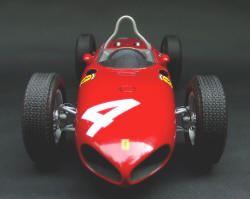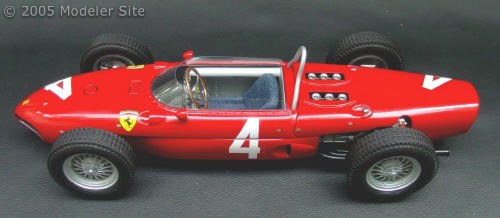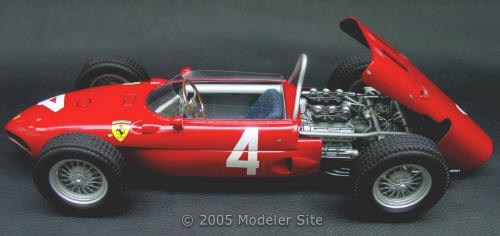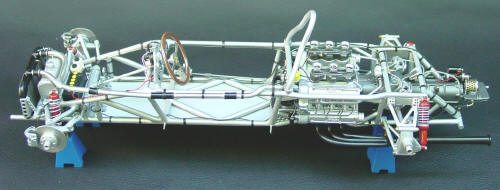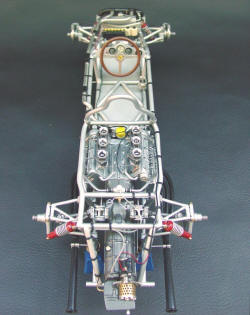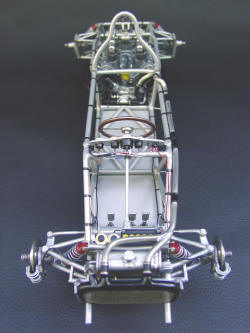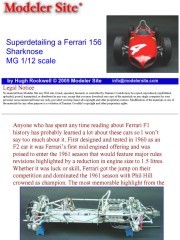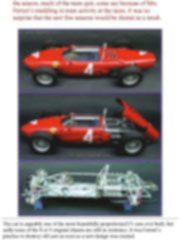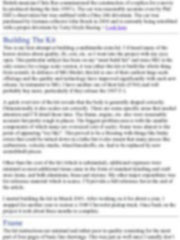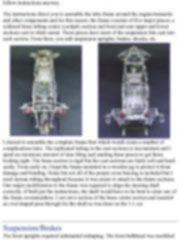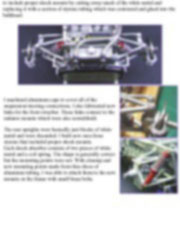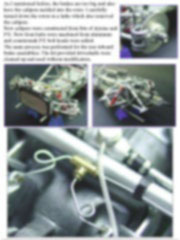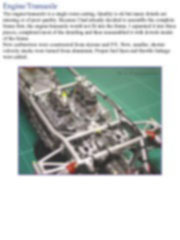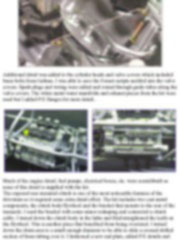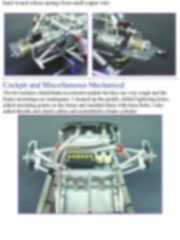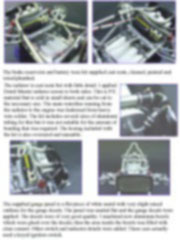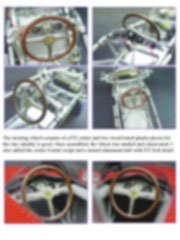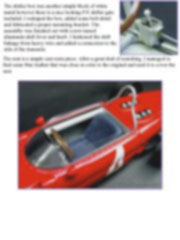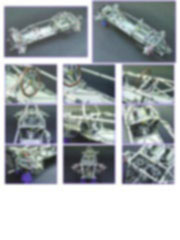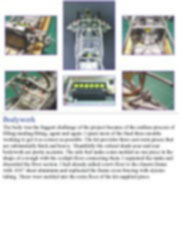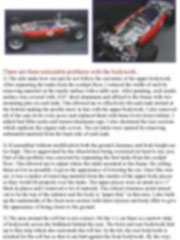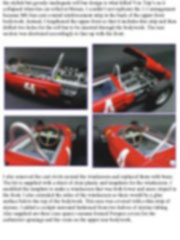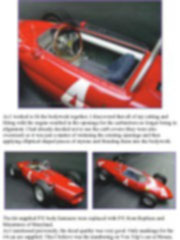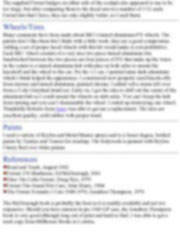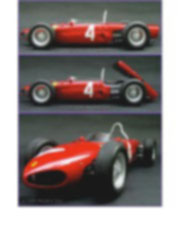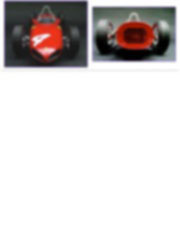|
Formula one |
|
||||||||||||||||||||||||||
|
Superdetailing a Ferrari 156 Sharknose MG 1/12 scale |
|||||||||||||||||||||||||||
|
by Hugh Rockwell © Modeler Site |
|||||||||||||||||||||||||||
|
Legal Notice No material from Modeler Site any Web site owned, operated, licensed, or controlled by Damian Covalski may be copied, reproduced, republished, uploaded, posted, transmitted, or distributed in any way, except that you may download one copy of the materials on any single computer for your personal, non-commercial home use only, provided you keep intact all copyright and other proprietary notices. Modification of the materials or use of the materials for any other purpose is a violation of Damian Covalski's copyright and other proprietary rights. Read More here > Legal notice Anyone who has spent any time reading about Ferrari F1 history has probably learned a lot about these cars so I won’t say too much about it. First designed and tested in 1960 as an F2 car it was Ferrari’s first mid engined offering and was poised to enter the 1961 season that would feature major rules revisions highlighted by a reduction in engine size to 1.5 litres. Whether it was luck or skill, Ferrari got the jump on their competition and dominated the 1961 season with Phil Hill crowned as champion. The most memorable highlight from the season is probably Wolfgang Von Trip’s crash at Monza, killing him along with 11 spectators. This cleared the way for Hill to become champion, much to Enzo Ferrari’s disappointment as Von Trips was his favorite. Enzo was so devastated by Von Trips’ death that he withdrew his cars from the remaining two races in the season, effectively robbing Hill of the opportunity to drive in the US Grand Prix. At the end of the season, much of the team quit, some say because of Mrs. Ferrari’s meddling in team activity at the races. It was no surprise that the next few seasons would be dismal as a result.
The car is arguably one of the most beautifully proportioned F1 cars ever built, but sadly none of the 8 or 9 original chassis are still in existence. It was Ferrari’s practice to destroy old cars as soon as a new design was created. Building The Kit This is my first attempt at building a multimedia resin kit. I’d heard many of the horror stories about quality, fit, cost, etc. so I went into the project with my eyes open. This particular subject has been on my “must build list” and since MG is the only source for a large scale version, it was either this kit or build the whole thing from scratch. In defence of MG Model, this kit is one of their earliest large scale offerings and the quality and technology have improved significantly with each new release. In testament to MG, I have another one of their kits (F500) and will probably buy more, particularly if they release the 1967 F-1. A quick overview of the kit reveals that the body is generally shaped correctly. Dimensionally it also scales out correctly. There are some specific areas that needed attention and I’ll detail those later. The frame, engine, etc. also were reasonably accurate but pretty rough in places. The biggest problem area is with the smaller components of which many are oversized (out of scale). Some were almost to the point of appearing “toy like”. This proved to be a blessing with things like brake rotors that could be turned down in a lathe but it also meant that many pieces like carburetors, velocity stacks, wheel knockoffs, etc. had to be replaced by new scratchbuilt pieces. Other than the cost of the kit (which is substantial), additional expenses were minimal as most additional items came in the form of standard detailing and craft store items, and bulk aluminum, brass and styrene. My other major expenditure was for reference material which is scarce. I’ll provide a full reference list at the end of the article. I started building the kit in March 2003. After working on it for about a year, I stopped for another year to restore a 1949 Chevrolet pickup truck. Once back on the project it took about three months to complete. Frame The kit instructions are minimal and rather poor in quality consisting for the most part of four pages of basic line drawings. This was just as well since I usually don’t follow instructions anyway. The instructions direct you to assemble the tube frame around the engine/transaxle and other components and for this reason, the frame consists of five major pieces, a soldered brass tubing center (cockpit) section and front and rear upper and lower sections cast in white metal. These pieces have most of the suspension bits cast into each section. From there, you add suspension uprights, brakes, shocks, etc.
I elected to assemble the complete frame first which would create a number of complications later. The replicated tubing in the cast sections is inconsistent and I spent an enormous amount of time filing and sanding these pieces to get them looking right. The brass section is rigid but the cast sections are fairly soft and bend easily. From early on, I kept the frame mounted in a wooden jig to protect it from damage and bending. Some but not all of the proper cross bracing is included but I used styrene tubing throughout because it was easier to attach to the frame sections. One major modification to the frame was required to align the steering shaft correctly. If built per the instructions, the shaft would have to be bent to clear one of the frame crossmembers. I cut out a section of the brass center section and inserted an oval shaped pass through for the shaft as was done on the 1:1 car. The full article is available in pdf format. Support us ordering our notes in PDF > Here
|
|||||||||||||||||||||||||||

